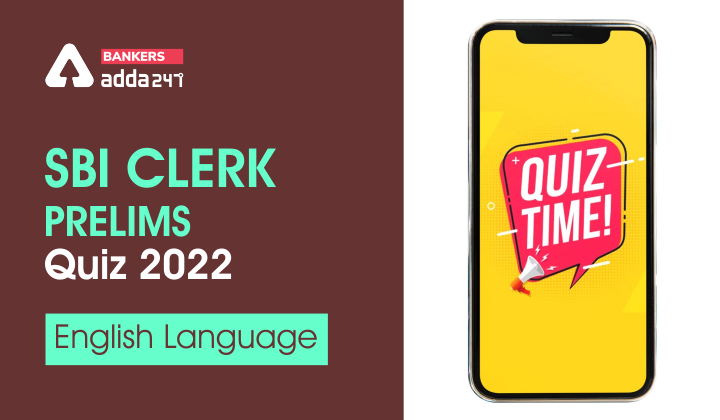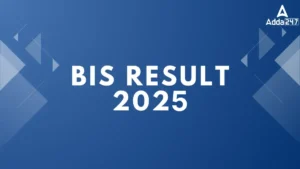Directions (1-5): Which of the phrases (a), (b), (c), (d) given below each sentence should replace the phrase printed in bold type to make the sentence grammatically correct? If the sentence is correct as it is, mark (e) i.e. ‘No correction required’ as the answer.
Q1. We had five fingers in each hand.
(a) have five fingers for (b) had five fingers on (c) have five finger in
(d) have five fingers on (e) No correction required
Q2. He regretted that he had acted so rashly in the ‘Play’.
(a) because he had act (b) that he had acts (c) because he has acted
(d) that he had been acted (e) No correction required
Q3. He is working hard to success for the examination.
(a) for succeeding (b) for succeed (c) to succeed in
(d) for success into (e) No correction required
Q4. The police are tried hard for tracking up the robbers.
(a) Trying hard to track down (b) Tried hard to track in (c) Trying hard to track up
(d) Tried hard for tracking down (e) No correction required
Q5. The company had decided for normal its relation with its clientele.
(a) Has decided to normal (b) Has decided to normalise
(c) Have decided normalisation (d) Has decided in normalising
(e) No correction required.
Directions (6-10): Rearrange the following six sentences (A), (B), (C), (D) (E) and (F) in the proper sequence so as to form meaningful paragraph and then answer the questions given below them.
(A) It narrates the heroic deeds of many kings and queens, princes and princesses.
(B) The longest of these poems tells the story of the great war between the kauravas and the Pandavas, the two clans of the same dynasty of king Bharata.
(C) The Mahabharata is a collection of many long poems.
(D) They were Dhritarashtra and Pandu.
(E) All these poems were put together by Vyasa.
(F) Two later kingdom of Hastinapur.
Q6. Which of the following should be the SIXTH (last) sentence?
(a) A (b) B (c) C (d) D (e) E
Q7. Which of the following should be the SECOND sentence?
(a) A (b) B (c) C (d) D (e) F
Q8. Which of the following should be the FIRST sentence?
(a) A (b) B (c) C (d) D (e) F
Q9 .Which of the following should be THIRD sentence?
(a) A (b) B (c) C (d) D (e) F
Q10. Which of the following should be the FIFTH sentence?
(a) A (b) B (c) C (d) D (e) F
Directions (11-15): In each question below, four words which are numbered (a), (b), (c) and (d) have been printed, one of which may be wrongly spelt. The number of that word is the answer. If all the four words are correctly spelt, mark (e) i.e. “All correct” as the answer.
Q11.
(a) Absorption (b) Democracy (c) Monopoly
(d) Obsene (e) All correct
Q12.
(a) Thunder (b) Tutorial (c) Milionnaire
(d) Highlight (e) All correct
Q13.
(a) Caution (b) Frangrans (c) Inflation
(d) Armour (e) All correct
Q14.
(a) Largely (b) Privilege (c) Mortality
(d) Laughter (e) All correct
Q15.
(a) Prasiworthy (b) Signboad (c) Liberate
(d) Mighty (e) All correct
Solutions
S1. Ans. (d)
Sol. Replace ‘had five fingers in’ with ‘have five fingers on’
S2. Ans. (e)
Sol. No correction required.
S3. Ans. (c)
Sol. Replace ‘to success’ with ‘to succeed in’
S4. Ans. (a)
Sol. Replace ‘tried hard for tracking up’ with ‘trying hard to track down’
S5. Ans. (b)
Sol. Replace ‘had decided for normal’ with ‘has decided to normalise’
S6. Ans. (d)
Sol. The correct sequence to form meaningful sequence is CAEBFD.
S7. Ans. (a)
Sol. The correct sequence to form meaningful sequence is CAEBFD.
S8. Ans. (c)
Sol. The correct sequence to form meaningful sequence is CAEBFD.
S9. Ans. (e)
Sol. The correct sequence to form meaningful sequence is CAEBFD.
S10. Ans. (e)
Sol. The correct sequence to form meaningful sequence is CAEBFD.
S11. Ans. (d)
Sol. Correct spelling is Obscene.
S12. Ans. (c)
Sol. Correct spelling is Millionaire.
S13. Ans. (b)
Sol. Correct spelling is Fragrance.
S14. Ans. (e)
Sol. No correction required.
S15. Ans. (a)
Sol. Correct spelling is Praiseworthy.











 GA Capsule for SBI Clerk Mains 2025, Dow...
GA Capsule for SBI Clerk Mains 2025, Dow...
 The Hindu Review October 2022: Download ...
The Hindu Review October 2022: Download ...
 BIS Result 2024-25 Out for ASO, JSA and ...
BIS Result 2024-25 Out for ASO, JSA and ...





